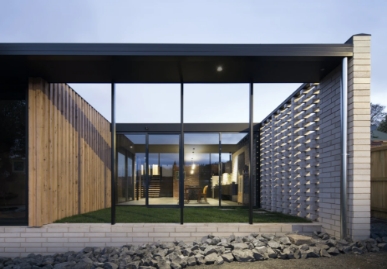Computation and Construction in Architecture (CoCoA) Lab
School of Architecture, Design and Planning
School of Architecture, Design and Planning





In 2015, members of the United Stations (UN) signed an Agenda for Sustainable Development, which included a 15-year plan to provide a more sustainable future for all by achieving the 17 Sustainable Development Goals (SDG) (United Nations, 2016). These goals address global challenges such as climate change, health and well-being, which are of direct relevance to the construction sector. UN-SDG 13 Climate action and UN-SDG 11 Sustainable cities and communities represent a move towards increasingly ambitious energy and environmental performance requirements in the way we design and construct buildings. The resulting pressure is driving the development of new construction methods, practices and technologies, with a corresponding increase in innovative building components and materials. At the same time, UN-SDG 3 Health and well-being calls for tighter indoor air quality (IAQ) standards. In order to provide a high level of IAQ, it is vitally important to seal buildings and to prevent uncontrolled exchange of air between indoors and outdoors, especially given the increasing density of the urban environment and the need to stem the alarming trend in levels of air pollution. As recent events have demonstrated, global warming is significantly expanding the number of bushfire-prone areas, thereby exposing a growing number of large cities to smoke hazards and contributing to a further decrease in air quality. In addition, the global pandemic of 2020 demonstrated that natural ventilation in high density settlements may be a channel of infection, and this has encouraged closer consideration of mechanical ventilation systems. For these reasons, recent building sustainability standards have adopted more stringent envelope airtightness requirements.
The combination of new construction methodologies, stricter airtightness requirements and the changing social and cultural context that influences the way we live inside buildings has created unprecedented challenges for the built environment. In modifying indoor and outdoor environments and the building envelopes that serve as a filter between the two, we are changing the physical parameters of the ways in which buildings behave and respond to climatic stimuli. In particular, increased importance is being directed towards hygrothermal analysis for both new constructions and remedial works. Although heat has long been an issue, the construction sector has only recently begun to discover the significant implications of moisture. The major issue with moisture-related failures in buildings is the time it takes for negative effects to become visible, which usually occurs only after a period of occupation. The lack of clear roles and responsibilities in the current design and construction process also poses a risk in regard to moisture management. Yet the changed building requirements have a significant impact on their hygrothermal behaviour: greater airtightness often translates into higher indoor humidity; new bio-based materials are more prone to organic proliferation; and different construction methodologies influence heat and moisture transfer through the envelope.
Understanding and predicting the way in which buildings and moisture may interact should be an important step in the design process, aiming to minimise possible negative long-term consequences. Moisture-related issues never have a simple solution, since they involve multiple factors, including design, construction, maintenance, materials, climate and occupation pattern. Thus, while the topic is attracting growing attention among researchers, designers and practitioners, the pace with which actual change is occurring is still too slow.
This book provides an overview of current research, knowledge and policy frameworks, and presents a comprehensive analysis of the implications of moisture and the importance of accounting for it during the design process. It responds to the urgent need for a systematic organisation of the existing knowledge to identify research gaps and provide directions for future development. The ultimate goal is to increase awareness of the multifaceted implications of hygrothermal phenomena and promote integrated design processes that lead to healthier and more durable constructions.